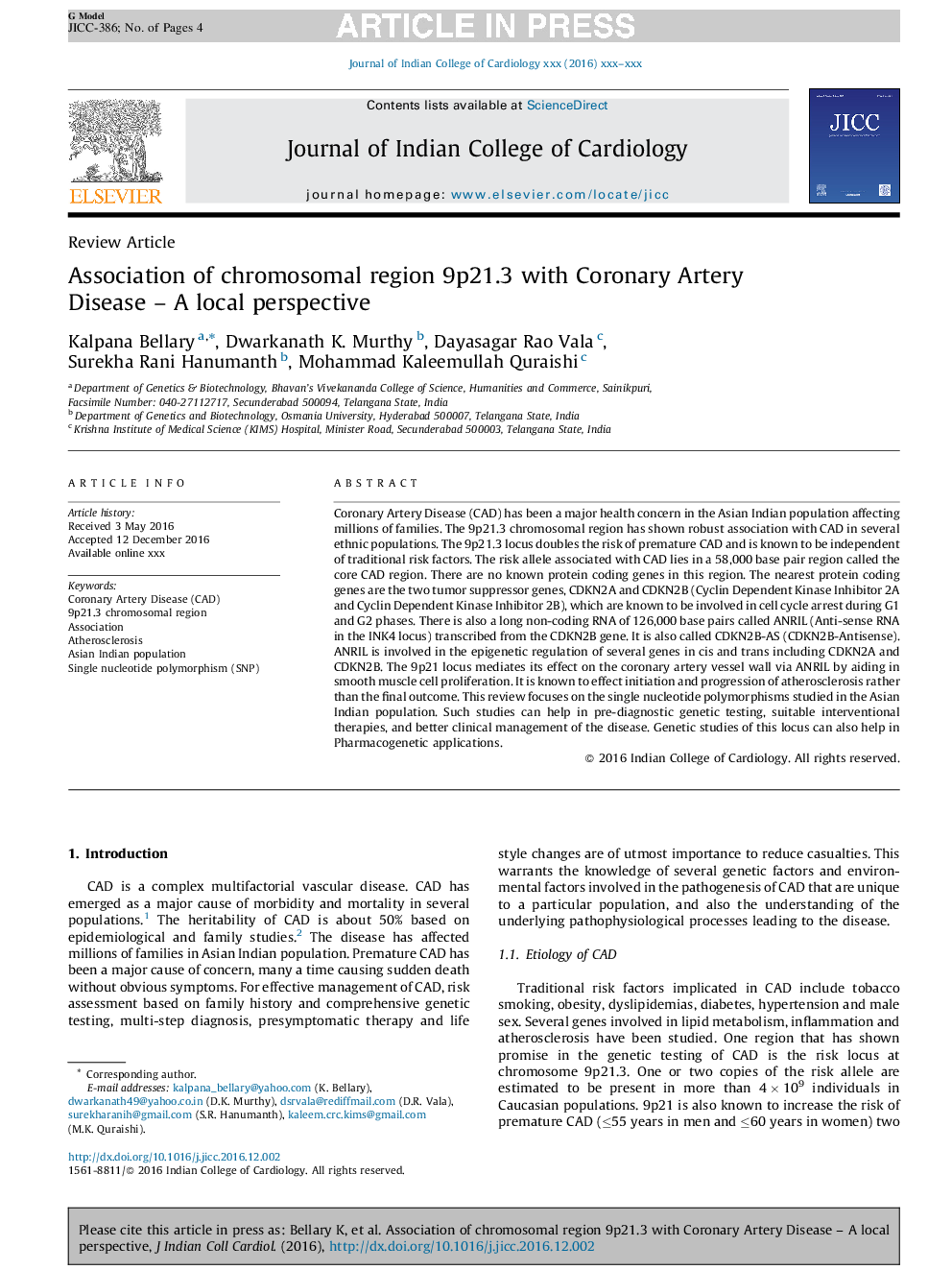| Article ID | Journal | Published Year | Pages | File Type |
|---|---|---|---|---|
| 5616156 | Journal of Indian College of Cardiology | 2016 | 4 Pages |
Abstract
Coronary Artery Disease (CAD) has been a major health concern in the Asian Indian population affecting millions of families. The 9p21.3 chromosomal region has shown robust association with CAD in several ethnic populations. The 9p21.3 locus doubles the risk of premature CAD and is known to be independent of traditional risk factors. The risk allele associated with CAD lies in a 58,000 base pair region called the core CAD region. There are no known protein coding genes in this region. The nearest protein coding genes are the two tumor suppressor genes, CDKN2A and CDKN2B (Cyclin Dependent Kinase Inhibitor 2A and Cyclin Dependent Kinase Inhibitor 2B), which are known to be involved in cell cycle arrest during G1 and G2 phases. There is also a long non-coding RNA of 126,000 base pairs called ANRIL (Anti-sense RNA in the INK4 locus) transcribed from the CDKN2B gene. It is also called CDKN2B-AS (CDKN2B-Antisense). ANRIL is involved in the epigenetic regulation of several genes in cis and trans including CDKN2A and CDKN2B. The 9p21 locus mediates its effect on the coronary artery vessel wall via ANRIL by aiding in smooth muscle cell proliferation. It is known to effect initiation and progression of atherosclerosis rather than the final outcome. This review focuses on the single nucleotide polymorphisms studied in the Asian Indian population. Such studies can help in pre-diagnostic genetic testing, suitable interventional therapies, and better clinical management of the disease. Genetic studies of this locus can also help in Pharmacogenetic applications.
Keywords
Related Topics
Health Sciences
Medicine and Dentistry
Cardiology and Cardiovascular Medicine
Authors
Kalpana Bellary, Dwarkanath K. Murthy, Dayasagar Rao Vala, Surekha Rani Hanumanth, Mohammad Kaleemullah Quraishi,
